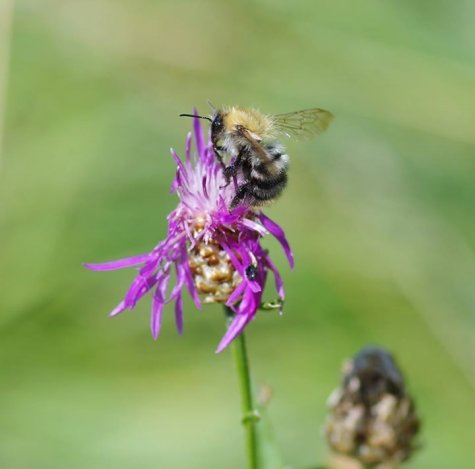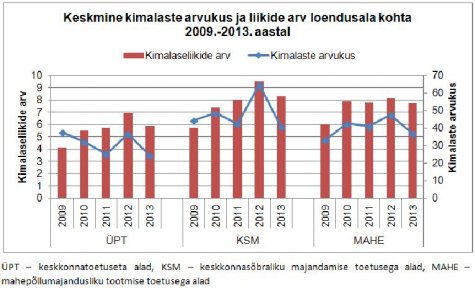Year of the Bumblebees
2014
Agricultural Research Centre monitors the wellbeing of bumblebees
Text Eneli Viik
Photo Inga Ilves
Translation: Liis
Bombus schrencki
Agricultural producers, e g farmers, can apply for grants for ecological production and sustainable management within the framework of the Estonian rural development plan. In exchange for the support they must meet a variety of requirements with a favourable environmental impact. One aim of both supports is the preservation and enhancement of biodiversity. In order to assess the achievement of these aims the Estonian Agricultural Research Centre carries out several investigations on agricultural land. One research object is bumblebees.
Monitoring of bumblebees started already in 2006 and each year data from the lands of 66 agricultural enterprises are collected. As comparison, among these such areas where neither of the above-mentioned grants are applied for are included – these are so-called conventional producers (ÜPT in the diagram). The results of the five most recent years of bumblebee monitoring are shown in the graph below:
Legends: Mean number of bumblebees and bumblebee species in monitored areas, 2009-2013.
Red staples – number of bumblebee species Blue line – number of bumblebees
ÜPT – areas with no environmental grants - KSM – areas with environmental management grants MAHE – areas with ecological production grants
The graph shows that the number of bumblebees is quite variable between years, depending on weather and other factors. At the same time it can be seen that the smallest number of bumblebees and their species occur in areas that have not joined the environmental grant scheme. The MAHE area indicators have been the most stable throughout the years and in the KSM areas the number of bumblebee species has increased step by step – although a small decrease was experienced in 2013. From the results it can be surmised that bumblebees are likely to have benefited from the environmental support but naming specific reasons still needs further analyses.
In addition to noting the number of bumblebees and of their species, the number of flowers in the monitored areas are also estimated. The monitoring results confirm that there are more bumblebees where there also are more flowers. After all, bumblebees go searching for nectar and pollen on flowers. The most numerous bumblebee species in Estonian agricultural landscapes are the red-tailed bumblebee(Bombus lapidarius), white-tailed bumblebee(Bombus lucorum), common or brown-banded carder bee (Bombus pascuorum), garden bumblebee (Bombus hortorum) and red-shanked bumblebee(Bombus ruderarius). Over the years all bumblebee species in Estonia have been encountered.
More information about the evaluation activities coordinated by the Agricultural Research Centre can be found at: http://pmk.agri.ee/pkt/
and about agricultural subsidies here.
Join the „Meie kimalased – Our bumblebees“ group on Facebook: LINK
Bumblebee identification sheets: LINK










